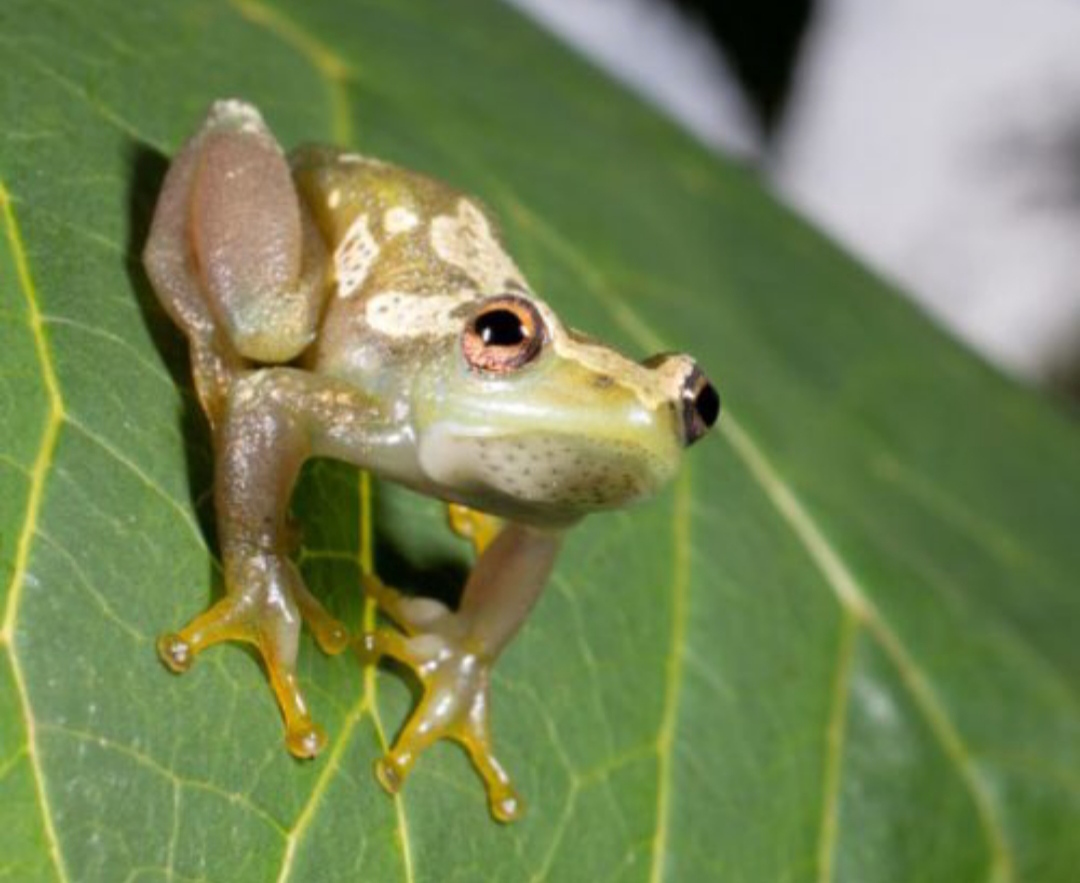
SCIENCE: NEW SPECIES OF VOICELESS FROG DISCOVERED IN TANZANIA
SCIENCE: NEW SPECIES OF VOICELESS FROG DISCOVERED IN TANZANIA
Scientists Discover New Species of Voiceless Frog in Tanzania
The newly-identified species belongs to the frog genus Hyperolius and has an unusual trait — it’s completely silent.
Hyperolius ukaguruensis. Image credit: Christoph Liedtke.
The new species is a member of a group of spiny-throated reed frogs within the Hyperolius genus.
“It’s a very odd group of frogs,” said Dr. Lucinda Lawson, a conservation biologist at the University of Cincinnati.
“The male frogs don’t call like most other frogs do.
We think they may use the spine as something like Braille for species recognition.”
“Without a call, they need some other way to recognize each other.”
“This group of frogs has only a few species, found in small populations that make them rare and at risk of extinction.
Finding a new member of this group is a major win for conservation.”
Named Hyperolius ukaguruensis, the new species occurs in the Mamiwa-Kisara North Forest Reserve in the Ukaguru Mountains of Tanzania.
It has unique body proportions, with smaller eyes in relation to its head than other spiny-throated reed frogs.
“Describing a species is the first step toward protecting it, particularly in increasingly fragmented forests like those in the Ukaguru Mountains,” Dr. Lawson said.
According to the team, Hyperolius ukaguruensis could be of high conservation concern.
“The Mamiwa-Kisara North Forest Reserve is a T-shaped remnant forest,” Dr. Lawson said.
“It has a lot of edge effects from people cutting firewood.”
“There are all sorts of pressures on this forest. It’s easy to cross the whole thing in just a few hours of hiking.”
“Knowing how many species exist and where is critical to conservation,” said Dr. H. Christoph Liedtke, a postdoctoral researcher with the Spanish National Research Council.
“The Ukaguru Mountains are part of the greater Eastern Arc Rift, a fascinating cradle of biodiversity, with many species endemic to single mountain blocks.”
“The fast population growth in Tanzania means that the mountain forest habitats are under growing threats from people.”
“I was thrilled to help describe a new species,” said Dr. Simon Loader, curator of vertebrates at London’s Natural History Museum.
“The discovery shows how much more there is to learn about diversity-rich parts of the world.”
“We still have a long way to go before understanding what species are there and where they can be found.
This is particularly the case for the biodiverse-rich submontane forests of Tanzania.”
“Amphibians are especially susceptible to human impacts. Since they absorb chemicals through their skin, they are vulnerable to toxins or changes in water acidity,” Dr. Lawson said.
“If a bird’s habitat is destroyed, they sometimes can fly to a new forest. But that’s hard for amphibians.”
“Having a diverse number of species is important to maintain healthy ecosystems.”
“We think about this question a lot: why does one species matter?”
“Frogs are part of the food chain. They eat insects and, in turn, are eaten by other animals.”
“If this one species goes extinct, nothing much happens.
We just lose one more strand in the fabric of the ecosystem.”
“But if you keep pulling out strands, the ecosystem becomes destabilized and the fabric unravels.”
The team’s paper was published online in the journal PLoS ONE.
L.P. Lawson et al. 2023. Diversification of spiny-throated reed frogs (Anura: Hyperoliidae) with the description of a new, range-restricted species from the Ukaguru Mountains, Tanzania. PLoS ONE 18 (2): e0277535; doi: 10.1371/journal.pone.0277535
Source: Sci.News
